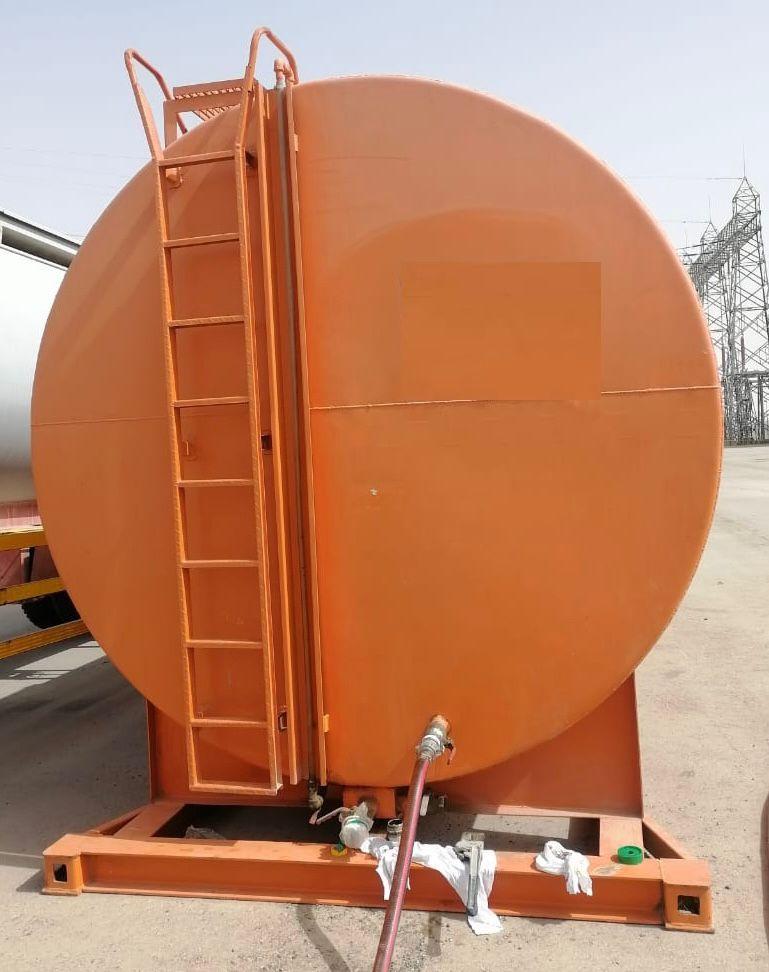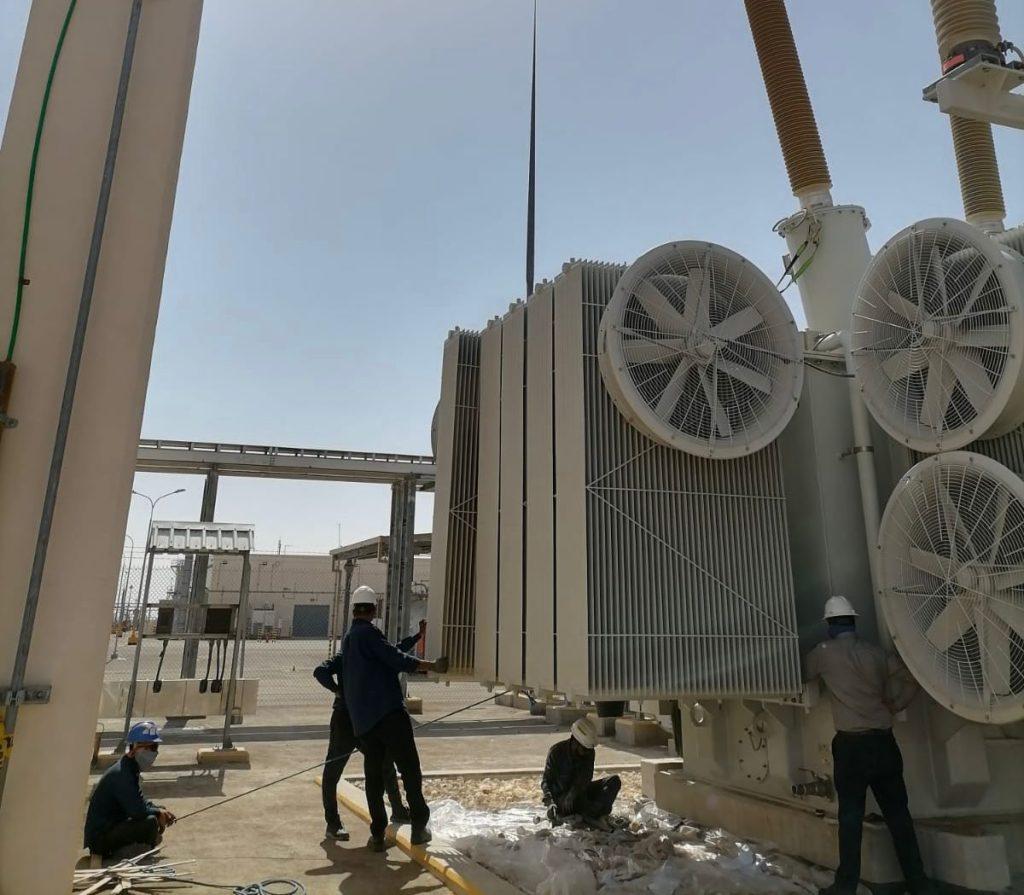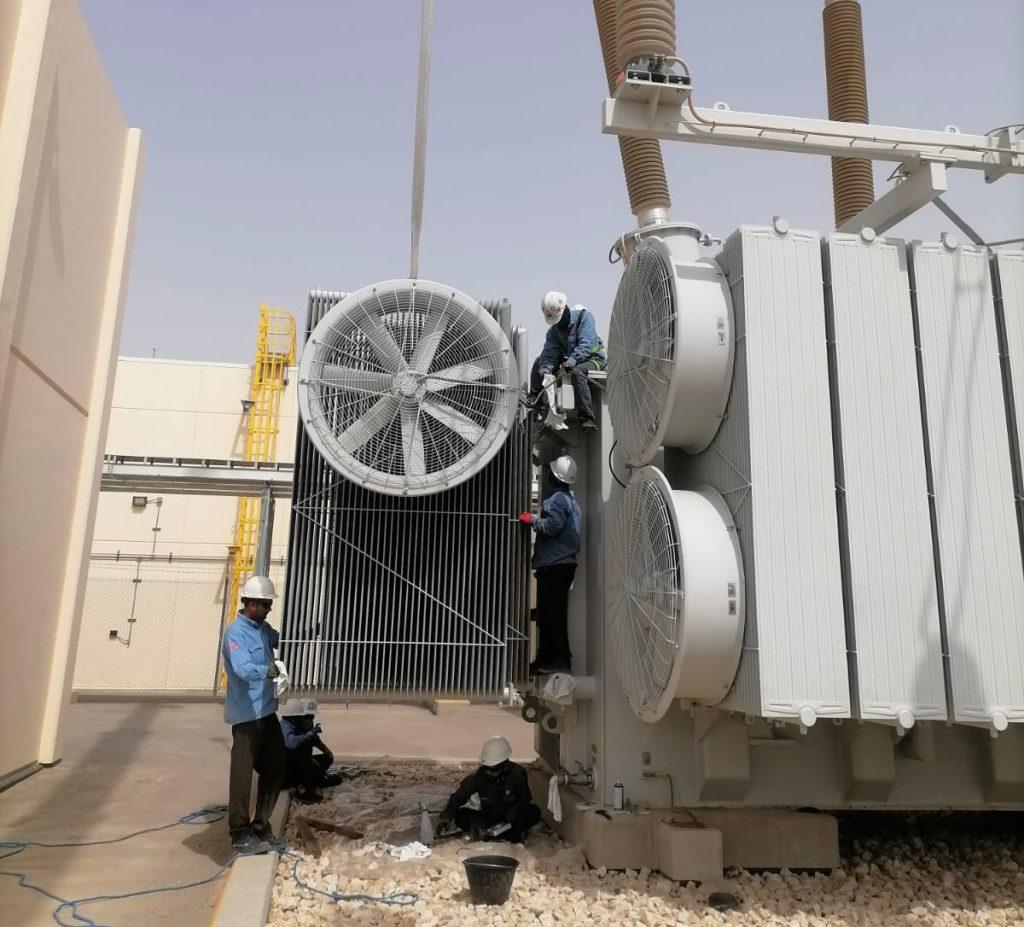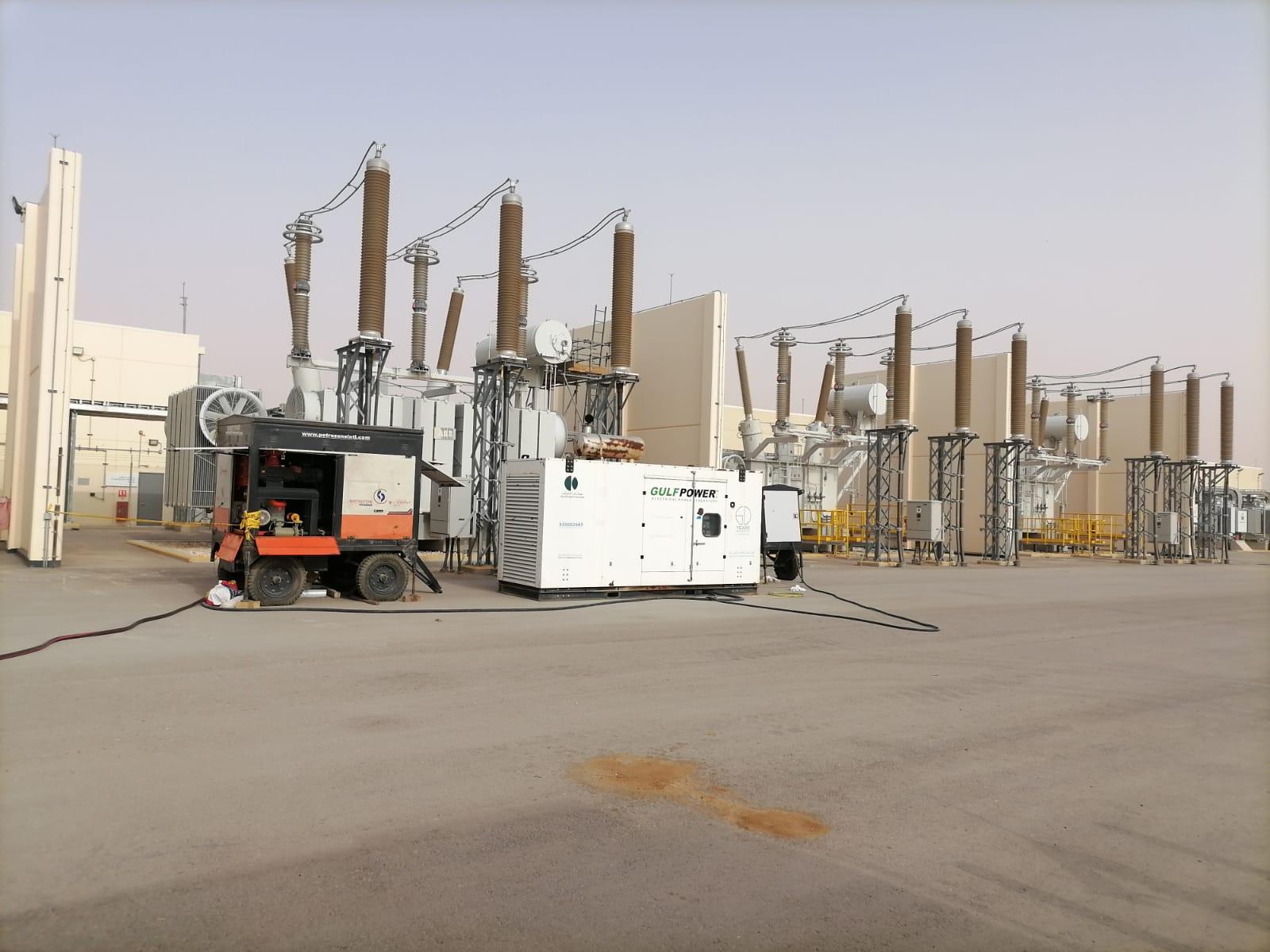At a major petrochemical plant in Saudi Arabia, multiple 150 MVA Power Transformers had developed serious oil leaks.
Each of these high-voltage units, carrying nearly 50,000 liters of insulating oil, had developed leaks across radiator flanges, PRDs, and valve connections. The pattern was clear: this wasn’t a minor issue — it was a full-scale reliability threat.
In this blog, we’ll take you deep into the process — from shutdown to gasket replacement, vacuuming, filtration, and nitrogen pressure testing — a behind-the-scenes look at how Petrozone made every transformer leak-free, clean, and ready for energization.
Mobilization — The Foundation of a Flawless Operation
Getting the right team and tools to the site is half the battle won.
Our transformer Our team transported the oil filtration plant, vacuum systems, toolkits, and other essential repair equipment to the site. The unloading was done carefully using appropriate cranes, and riggers Once the equipment was unloaded, we barricaded the job area, implemented our safety protocols, and ensured everything was in place before starting work. Safety isn’t an afterthought at Petrozone — it’s the foundation.
Site Mobilization: Unloading Oil Filtration & Vacuum Units
Shutdown & Work Permits — Securing Safe Access
Before you touch a transformer, you must earn the right to do so.
We coordinated with the refinery’s operations team to secure work permits and full shutdown approvals. Plant managers and protection staff verified that the transformers were completely de-energized. Only after that, our job officially began.
Barricades in Place Before Repair Begins
Transformer Inspection — Diagnosing the Damage
You can’t fix what you haven’t seen clearly.
Our experts conducted a detailed visual inspection of each transformer. Most leaks were concentrated around the top and bottom radiator flanges, with some units requiring full flange replacement, and others needing only gasket replacement. Additionally, several leaks were identified around the Pressure Relief Device (PRD) and Buchholz relay fittings.
All findings were documented and reviewed with the client’s maintenance team before execution.
Transformer Leaks Inspection
Draining 50,000 Liters of Oil — Controlled, Clean, Compliant
Leak repair starts with safe and strategic oil handling.
We connected two storage tanks — one with 40,000-liter capacity and another with 15,000 liters — to store the full transformer oil volume.
Oil was drained slowly and carefully, making sure no contamination, spillage, or air pockets entered the system. This step might seem straightforward, but handling such high volumes of critical dielectric fluid requires precision pumps, closed-loop hoses, and trained operators to protect insulation quality.

Draining Oil into Storage Tanks
Radiator Removal — Lifting with Precision
Accessing the root of the problem begins with removing the barriers.
Once the oil was drained, we began the removal of radiator units — the very components responsible for cooling the transformer and where most leaks occurred.
To do this safely, we used:
- Cranes provided by the client
- Proper rigging techniques
- Tag lines and ground crews for guided handling
Once detached, the radiator flanges were exposed, and we carefully removed the existing gaskets


Lifting Transformer Radiator with Crane for Leak Repair
Gasket Replacement & Flange Repair — Sealing It Right
What you seal today decides your reliability tomorrow.
Petrozone replaced all faulty gaskets using high-pressure, high-temperature certified materials. For flanges that were beyond reuse, we sourced OEM-approved replacements in exact dimensions. This ensured the new seal could withstand operational heat, pressure, and environmental conditions without fail.
This is where many contractors cut corners — but we know the truth:
“A wrong gasket today becomes tomorrow’s leak.”
After careful cleaning and inspection, the new gaskets were installed, the radiator flanges were realigned, and the radiators were reinstalled back onto the transformer body
Petrozone Team Replacing Gaskets and Fixing Leaks
Vacuuming & Oil Refill — The Right Way to Re-Energize
Moisture and air are silent threats inside your transformer.
Moisture and air are silent threats inside your transformer — two elements that can quietly degrade insulation and compromise long-term reliability.
Before refilling oil, the transformer was placed under deep vacuum using our industrial vacuum system. We pulled the tank down to 0.1 mbar and maintained this pressure long enough to meet manufacturer standards, ensuring all trapped air and moisture were fully removed.
Once a stable vacuum was confirmed, we began the oil refilling process —refilling oil slowly under vacuum conditions. This controlled method prevented the introduction of air bubbles and turbulence that could compromise the dielectric strength of the oil. It’s like giving the transformer a blood transfusion — clean, precise, and vital for performance and longevity.
Though often overlooked in smaller repairs, this two-step process is a mark of professional execution — a critical safeguard for plant or operation managers responsible for high-value power assets. At Petrozone, this level of precision isn’t optional — it’s standard.
Oil Filtration — Purifying the Lifeblood of the Transformer
Transformer oil is only as good as its purity.
After the refill, our state-of-the-art filtration system was connected to run continuous oil purification. Here’s why this step is critical for plant and maintenance managers:
- It removes moisture, dissolved gases, and particulate matter.
- It improves Breakdown Voltage (BDV) — a direct measure of oil’s insulation strength.
- It extends transformer life and prevents premature insulation failure.
We monitored moisture content, particle count, and BDV in real time. The process continued until BDV reached safe operational thresholds. Only then did we proceed.
Oil Filtration Unit Running to Restore Insulating Oil Quality
Nitrogen Leak Test — The Final Proof of Performance
The only way to confirm a leak repair is by pressurizing the system.
We filled the transformer with dry nitrogen gas and created positive internal pressure. This pressure was maintained for 24 hours, while our team and client engineers monitored the pressure gauge and checked for any seepage.
If there were any micro-leaks left behind, they would have revealed themselves. But there weren’t. The pressure held firm. No drop. No leak.
That’s how you know the job was done right.
Cleaning & Final Touches — A Finish That Speaks for Itself
The only way to confirm a leak repair is by pressurizing the system.
We filled the transformer with dry nitrogen gas and created positive internal pressure. This pressure was maintained for 24 hours, while our team and client engineers monitored the pressure gauge and checked for any seepage.
If there were any micro-leaks left behind, they would have revealed themselves. But there weren’t. The pressure held firm. No drop. No leak.
That’s how you know the job was done right.
“Petrozone delivered what they promised — clean execution, minimal downtime, and airtight documentation. Their team worked like clockwork.”
— Maintenance Manager
Final Thoughts: A Message for Plant & Maintenance Managers
Transformer leaks are never small. They are early symptoms of larger risks — insulation failure, oil contamination, or sudden outages. They might look like minor issues at first glance, but for large gas plants and refineries, they are warning signs of deeper risks — from insulation failure to environmental violations.
As the maintenance manager at the site remarked,
“Petrozone delivered what they promised — clean execution, minimal downtime, and airtight documentation. Their team worked like clockwork.”
This project undertaken has proved that with proper planning, high-quality materials, and experienced technicians, even the most complex leak repairs can be executed smoothly, safely, and permanently.
From radiator gasket replacement to oil filtration, and Transformer Testing , Petrozone stands ready to serve power-intensive industries across Saudi Arabia and the GCC.
Related Links & Further Reading
Looking to explore more about our services and expertise? Check out the following pages:
🔗 Cable Termination Services – Discover how we handle MV cable terminations with precision and reliability.
🔗 Erection & Installation – Learn more about our process for safely installing electrical equipment and infrastructure.
🔗 Testing & Commissioning – Explore our comprehensive testing protocols that ensure safe energization.
🔗 Contact Us – Got a similar project? Reach out to us today and let’s get it done, the Petrozone way.


